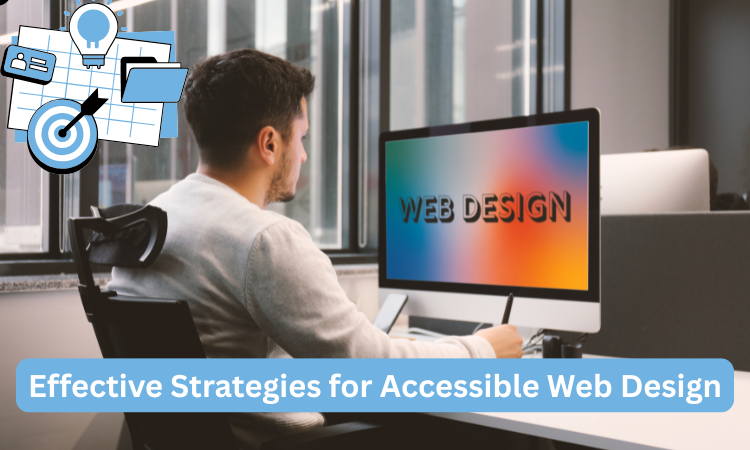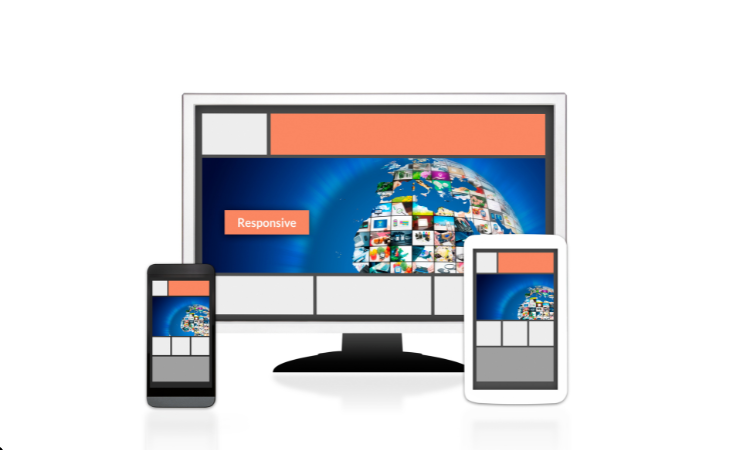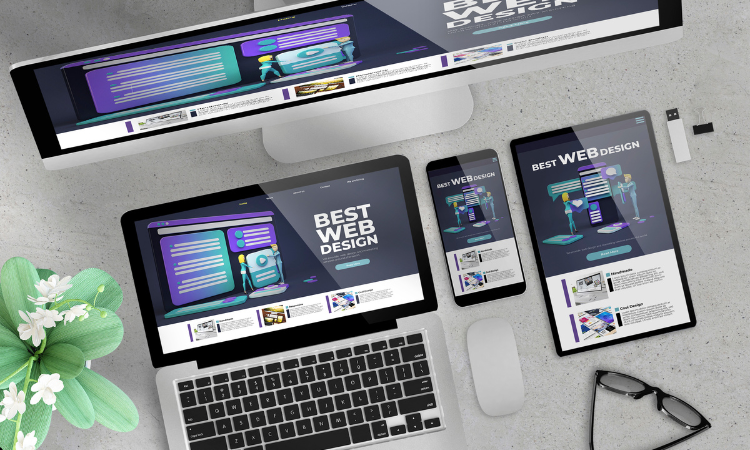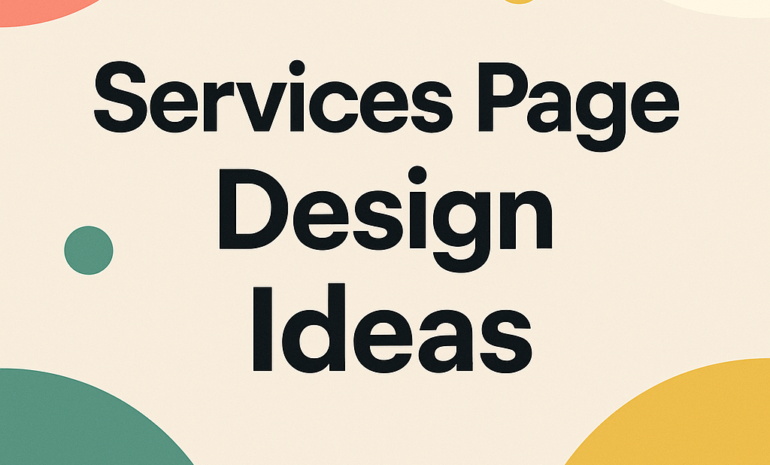An accessible website allows everyone, regardless of their abilities, to interact with your content easily and comfortably.
This includes people with visual impairments or those who use keyboards for navigation. Accessibility is about making sure all users can access your site with ease.
In this article, we’ll explore simple yet effective practices to make your website more inclusive and user-friendly for all.
Let’s take a look at how small changes can create a better experience for everyone.
What is Accessible Web Design?
Accessible web design means creating websites that everyone can use, including people with disabilities.
This includes designing for screen readers, keyboard navigation, color contrast, text size, and other elements that ensure all users can access and interact with content easily.
Before diving into specific accessible web design techniques, it helps to understand the key ideas that guide accessible design.
These basic principles create the groundwork for a smoother experience for everyone.

Understanding Web Accessibility
Web accessibility refers to the practice of making websites usable for everyone, regardless of their abilities or disabilities.
This means considering the needs of people with different impairments, such as visual, hearing, motor, and cognitive disabilities.
Understanding the basics of web accessibility, designers and developers can ensure their websites are usable to the widest audience possible.
It involves using design elements and technologies that enable screen readers, braille devices, and other assistive tools to interpret and navigate the website.
Accessibility is about more than just compliance; it’s about creating an inclusive digital space for all users.
Use of Semantic HTML for Clarity
Using semantic HTML tags is one of the simplest yet most effective ways to ensure your website is accessible. Semantic HTML provides meaning to the structure of your content.
Tags like <header>, <nav>, <article>, and <footer> help screen readers and other assistive technologies understand the hierarchy and content of a webpage.
For example, proper headings (<h1>, <h2>, etc.) and lists (<ul>, <ol>, <li>) help visually impaired users navigate content logically.
Using semantic elements instead of generic tags like <div> or <span> ensures that users, regardless of how they interact with your site, can access your content in a meaningful way.

Importance of Color Contrast and Text Size
Accessibility also involves taking steps to keep text readable for every visitor. One of the key parts of this is applying strong color contrast between the text and background.
People with visual differences, including those who experience color blindness, rely on this contrast to clearly understand what’s written.
It helps remove confusion and makes reading more comfortable across different devices and lighting conditions.
Text size is another important part of this experience. When the font is too small, it creates difficulties for people who have vision challenges or certain reading difficulties.
Choosing a font that’s naturally readable, along with allowing users to adjust its size, supports a smoother reading experience.
Designing your website in a way that supports easy readin through clear contrast, suitable text size, and flexible font settings helps create a welcoming space where no one struggles just to understand what’s on the page.
Keyboard Navigation Support
Not every user can interact with your website using a mouse. For many individuals with motor disabilities, the keyboard is the primary tool for navigating websites.
Ensuring that your site is fully navigable using just the keyboard is a crucial accessibility practice.
This includes providing clear tab orders, making sure all interactive elements are accessible via keyboard, and adding functionality like skip links.
When users can easily navigate through forms, buttons, and links without needing a mouse, it improves the experience for everyone, especially those with mobility challenges.

Image Alt Text and Media Descriptions
Adding alt text to images is a key practice in web accessibility. Alt text helps screen readers describe images to users who are visually impaired.
It provides a textual description of the image’s content and purpose. Similarly, videos should include captions or transcripts for users with hearing impairments.
Descriptive audio tracks can also be added to media content for users with visual disabilities.
Providing alternative ways to experience media ensures your website remains inclusive to all types of users, regardless of their sensory abilities.
Focus Indicators for Interactive Elements
Focus indicators are important for helping users navigate interactive elements like buttons, links, and forms.
When users navigate using the keyboard, it’s important that they can clearly see which element is in focus.
Focus indicators (like borders or background changes) highlight the active element, making it easier for users to understand their current position on the page.
Without these indicators, users with visual impairments or those relying on keyboard navigation might struggle to find and interact with key elements, which could impact their overall experience.
Responsive Layout and Readable Fonts
Responsive design makes sure your website functions properly across all devices, from desktops to mobile phones.
A website that adjusts to various screen sizes is vital for making it accessible to all users. No matter which device someone uses, they should be able to navigate the site with ease.
Equally important is choosing fonts that are readable and scalable. It’s crucial that users can adjust the text size without disrupting the layout or losing essential content.
Fonts should not only be legible but also adaptable to meet the needs of different users.
Making certain that your website’s design adapts smoothly to different screens while maintaining readability across all sizes is a key component of accessible web design.
This approach helps create a more inclusive experience, ensuring that all users, regardless of their device or needs, can easily interact with the site.

Testing Accessibility Across Devices
Testing your website for accessibility across multiple devices and platforms guarantees that all users, regardless of the tools they use, can access your site.
This involves utilizing accessibility testing tools and manually testing on different devices to make sure that features work as expected.
It’s important to test with assistive technologies such as screen readers, voice recognition software, and magnification tools.
These tests help confirm that your site works well for users with different needs.
Testing across various devices and ensuring compatibility with assistive technologies helps identify and fix potential issues before they affect your users.
Designing with Responsive Layouts and Readable Fonts
Designing with responsiveness in mind ensures that your website adjusts to different screen sizes and orientations.
This is especially important for users on mobile devices or tablets, who may need to adjust their screen settings for better clarity.
Readable fonts, along with appropriate line spacing and paragraph breaks, help make content easy to digest for users with cognitive disabilities.
A responsive, readable design ensures that all users can enjoy a seamless and comfortable browsing experience, regardless of their device or screen preferences.

Regularly Testing Your Website for Accessibility
Web accessibility isn’t a one-time task. Regular testing is necessary to make sure that your website continues to meet accessibility standards as it evolves.
Performing accessibility audits periodically helps identify new barriers and fix them before they negatively impact users.
There are many tools available to test accessibility, such as WAVE and Lighthouse, but manual testing with real users is also crucial.
Regular testing keeps your website compliant with the latest standards and certifies that all users, regardless of ability, can access your content.
How BrandOut Helps You Build Accessible Websites?
At BrandOut, we are committed to creating websites that are not only visually appealing but also accessible to all users.
Our team follows best practices for web accessibility, ensuring that your website is compliant with WCAG (Web Content Accessibility Guidelines) and meets the needs of users with various disabilities.
From using semantic HTML to providing keyboard navigation support, we take every step necessary to make your website fully accessible.
In case you need to redesign your site or build a new one, BrandOut is here to help you create an inclusive and accessible user experience.
Summary
Designing with accessibility in mind is crucial for reaching the broadest audience possible.
Implementing best practices, you create a more inclusive website that is usable by everyone, including those with disabilities.
Accessibility is not just about meeting legal requirements, but about providing a better user experience for all visitors.
Following the strategies outlined in this article, you can confirm that your website is accessible, easy to navigate, and welcoming to everyone.
Most Asked Questions:
How do I make my website design accessible?
Creating an accessible website requires a few important steps.
Start by using semantic HTML to make sure that the structure of your website is meaningful and readable for screen readers.
Verify your text has good color contrast against the background so it’s readable for everyone, especially those with visual impairments.
Include alt text with every image to help screen readers describe visuals for users with limited vision.
Also, make sure your site supports keyboard navigation, allowing those who don’t use a mouse to move through content with ease.
Finally, test your website across devices and with assistive technologies like screen readers to make sure everything works smoothly.
Perceivable: Present content in a way that users can clearly understand, like providing text descriptions for images and other non-text elements.
Operable: Interface elements must be operable by all users, including those who rely on keyboards instead of a mouse.
Robust: Content must be compatible with both current and future technologies, ensuring it works reliably with assistive tools and devices.
What are the best practices for accessibility in HTML?
Some of the best practices for making your HTML more accessible include:
- Using semantic HTML tags (like <header>, <footer>, <article>) to improve structure and understanding for screen readers.
- Providing alt text for all images so that screen readers can describe them to visually impaired users.
- Making interactive elements accessible via the keyboard (e.g., links, buttons, and forms).
Web accessibility best practices include:
- Structure content logically using semantic HTML to ensure screen readers can interpret and present it clearly to users.
- Ensuring that interactive elements are keyboard accessible.
- Test your website using accessibility tools and gather feedback from real users to catch barriers that automated checks might miss.
- Write alt text for images and include captions for videos to support users with visual and hearing challenges.
- Make sure your website works properly on various devices and with assistive technologies.
How to improve the accessibility of your website?
To improve the accessibility of your website, start by reviewing your website’s color scheme for sufficient contrast.
Then, confirm all images have alt text, provide text captions for multimedia content, and make sure your site can be navigated using just a keyboard.
Regularly test for accessibility using tools like WAVE or Lighthouse, and conduct real-world tests with people who have disabilities.
It’s also important to keep your design simple and consistent, so users with cognitive impairments can easily navigate your content.




